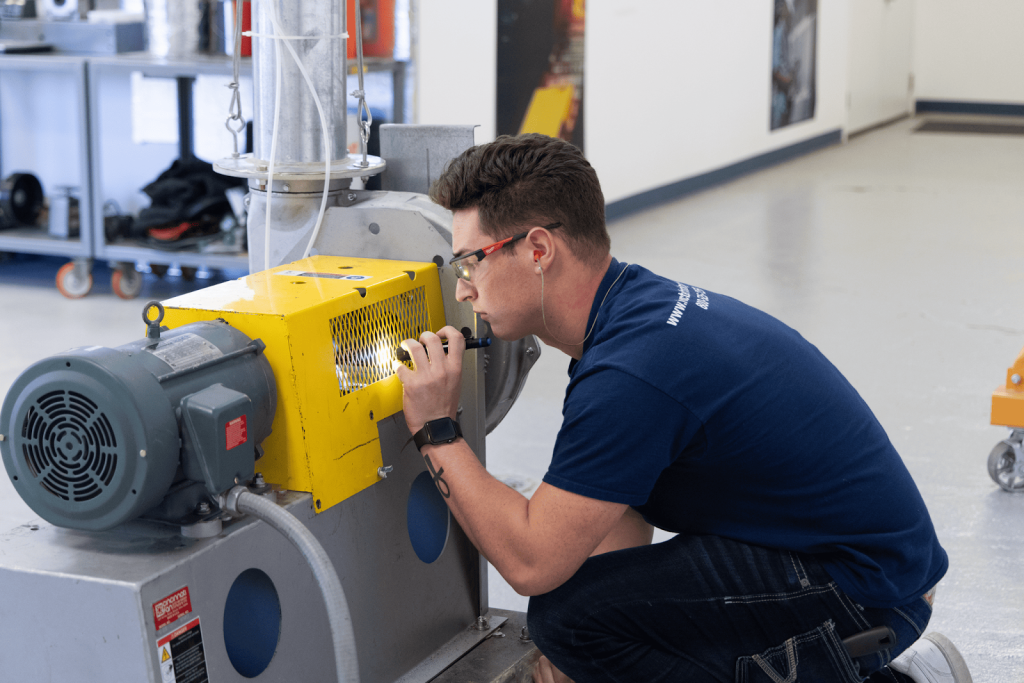
Numerous sectors rely on rotating machinery to power everything from turbines and pumps to manufacturing facilities and automobile engines. Stability and accuracy are essential for this equipment to function well. However, unbalance is one of the most prevalent—yet often disregarded—problems with spinning machinery. A machine that is out of balance may experience excessive wear, noise, and vibrations, which may ultimately result in malfunctions or even catastrophic failures. Dynamic balancing is useful in this situation. Dynamic balancing guarantees that the rotor stays stable at operating speeds, in contrast to static balancing, which solely takes into consideration the weight distribution on a stationary rotor. Dynamic balancing increases the lifespan of machinery, enhances performance, and protects both personnel and equipment by resolving imbalances under actual operating conditions.
Reducing Noise and Vibration
The notable decrease in noise and vibration is among dynamic balancing’s most obvious advantages. Uneven centrifugal forces are produced by spinning component imbalances, and they increase with machine speed. This causes vibrations that spread throughout the equipment’s structure and the surrounding area. In addition to impairing performance, continuous vibration produces excessive noise, which can be dangerous in work environments. By dispersing the rotating element’s mass uniformly, dynamic balancing rectifies these imbalances and lessens the uneven stresses that result in vibration. In addition to guaranteeing adherence to occupational safety regulations, this more efficient operation makes the workplace more comfortable for employees, which is especially beneficial in sectors where large gear is used frequently.
Increasing the Lifespan of Equipment
For every business, machinery is a major investment; therefore, extending its lifespan is usually a top concern. Unbalanced rotors accelerate wear and tear by putting excessive strain on housings, shafts, and bearings. Particularly sensitive to vibration, bearings might break down too soon if they are constantly unbalanced. By guaranteeing that forces are dispersed uniformly throughout the operation, dynamic balancing services aid in the protection of these vital components. This slows down the rate of degradation by lessening the load on machine parts. As a result, there are eventually fewer malfunctions, cheaper replacements, and less downtime. This longer lifespan might result in significant cost savings for sectors like manufacturing or power generation that depend on ongoing operations.
Increasing Performance and Efficiency
Another important factor that makes dynamic balancing essential is efficiency. When machinery vibrates excessively because of an imbalance, energy is not used for productive work but is instead lost countering these forces. This inefficiency may show up as variable production quality, decreased productivity, or higher energy use. Even little imbalances can significantly affect efficiency in high-speed applications. Dynamic balancing makes it possible for machines to operate more smoothly and efficiently by getting rid of these inefficiencies. Better product uniformity, increased dependability, and, frequently, increased throughput are the results. Dynamic balancing becomes crucial to sustaining profitability in cutthroat businesses where every efficiency percentage counts.
Improving Safety Regulations
When using rotating machinery, safety is the top priority. In addition to producing vibrations, an unbalanced rotor may also lead to hazardous situations, including component loosening, cracking, or even rotor failure. In severe situations, these malfunctions may lead to mishaps that endanger employees and harm costly machinery. Dynamic balancing stabilizes the machinery at operating speeds, lowering the likelihood of unexpected failures. This proactive maintenance approach promotes a safer workplace while assisting businesses in meeting strict safety requirements. Additionally, companies can prevent expensive liabilities and harm to their brand by reducing the probability of catastrophic equipment failures.
Cutting Operational and Maintenance Expenses
Lastly, dynamic balancing is essential for reducing total operating and maintenance costs. In terms of material costs and lost production during downtime, frequent repairs and part replacements are expensive. Unplanned maintenance frequently causes delays and schedule disruptions that affect an organization’s overall operations. Unexpected breakdowns can be reduced, and maintenance intervals can be prolonged by maintaining machinery in ideal balance. This enables maintenance crews to concentrate on scheduled maintenance as opposed to last-minute repairs. Additionally, balanced machinery uses less energy, which lowers operating expenses. Dynamic balancing is a useful and affordable solution for companies looking to optimize operations and maximize return on investment.
Implementing appropriate balancing methods is crucial in businesses where inefficiencies and downtime can have major financial consequences. Prioritizing dynamic balancing is a wise investment that protects assets and boosts long-term productivity for engineers, maintenance teams, and company owners alike.